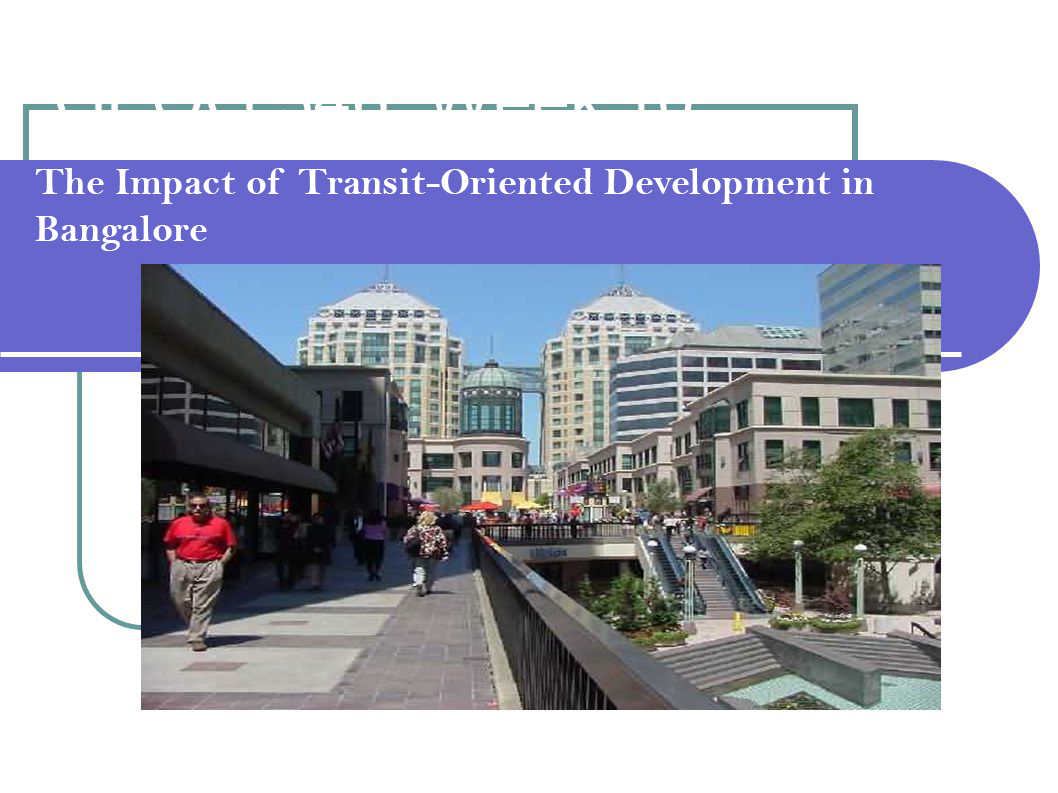The Impact of Transit-Oriented Development in Bangalore
Read latest blogs and articles from Housystan

The Information mentioned here was last updated on:
27/11/2025The Impact of Transit-Oriented Development in Bangalore
The bustling city of Bangalore, often dubbed the Silicon Valley of India, is known for its rapid urbanization and burgeoning technology industry. However, one of the less glamorous aspects of this growth is the traffic congestion that plagues the city. In response, transit-oriented development (TOD) has emerged as a promising solution. This approach focuses on creating vibrant, livable urban spaces centered around transit facilities, aimed at reducing reliance on private vehicles. Let's explore the impact of transit-oriented development in Bangalore and how it's transforming the city's urban landscape.
What is Transit-Oriented Development?
- Verified Tenants/Buyers
- Unlimited Property Listing
- Zero subscription/charges fee
Transit-oriented development is a planning strategy that aims to create compact, mixed-use communities within walking distance of high-quality public transportation. The goal is to offer residents convenient access to transit options, reducing the need for cars and easing traffic congestion. Key features of TOD include:
- Mixed-use development: Combining residential, commercial, and recreational spaces in one area to promote walkability.
- High-density housing: Building more housing units near transit stations to accommodate more people.
- Safe pedestrian and bike-friendly infrastructure: Ensuring streetscapes that encourage walking and cycling.
- Sustainable design: Incorporating green building practices and sustainable materials.
Why Bangalore Needs Transit-Oriented Development
Bangalore's traffic woes are notorious, with long commutes and pollution causing significant issues for residents. Some of the main challenges facing the city include:
- Rapid population growth: With its booming IT sector, Bangalore attracts thousands of new residents each year, stretching infrastructure to its limits.
- Traffic congestion: Excessive reliance on private vehicles leads to gridlock, wasted time, and increased pollution levels.
- Lack of adequate public transport: While Bangalore does have a metro system and bus network, these services are often insufficient for the growing population.
Transit-oriented development addresses these challenges by encouraging the use of public transit and promoting sustainable urban growth.
The Benefits of Transit-Oriented Development for Bangalore
Transit-oriented development offers numerous advantages, which are particularly relevant for a city like Bangalore:
1. Improved Quality of Life
By reducing the need for long commutes, TOD helps improve the quality of life for urban dwellers:
- Shorter commutes: Residents spend less time in traffic and more time enjoying their personal lives.
- Better air quality: Fewer vehicles on the road reduce emissions, leading to cleaner air.
- Access to amenities: With mixed-use developments, essential services and entertainment options are just a short walk away.
2. Economic Growth
TOD has the potential to boost local economies by:
- Attracting businesses: Increased foot traffic in transit areas makes them attractive for businesses and retailers.
- Raising property values: Proximity to transit stations often increases property values, benefiting local homeowners.
- Job creation: Construction and maintenance of TOD projects create jobs and stimulate economic activity.
3. Environmental Sustainability
Promoting greener urban living, TOD incorporates sustainable practices such as:
- Reduction in carbon footprint: Fewer cars on the road lower greenhouse gas emissions.
- Energy-efficient buildings: Many TOD projects prioritize energy conservation and renewable energy sources.
- Preservation of green spaces: Higher density development helps prevent urban sprawl, preserving natural areas.
Case Studies: Successful TOD Projects in Bangalore
Bangalore has several TOD projects underway, each showing promise for addressing the city's urban challenges. Here are a few notable examples:
The Namma Metro Transformation
- Expansion plans: The Bangalore Metro Rail Corporation Limited has been expanding the Namma Metro, integrating station areas with residential and commercial projects.
- Increased ridership: As more stations open, ridership continues to grow, indicating public acceptance of transit options.
- Urban regeneration: Areas around metro stations are being revitalized, with new housing, retail, and office spaces.
Whitefield's Urban Renewal
- Strategic location: Located in one of Bangalore's IT hubs, Whitefield is a focus for TOD, with plans to enhance connectivity and access.
- Integrated developments: Projects in Whitefield are designed to blend residential, commercial, and public spaces seamlessly.
- Increased efficiency: Better transport links and infrastructure improvements are reducing travel time for workers in the area.
Yeshwanthpur's New Vision
- Mixed-use hubs: Developments around the Yeshwanthpur metro station include retail, housing, and office spaces designed to minimize travel needs.
- Community-focused design: Public spaces and amenities promote a sense of community and encourage pedestrian activity.
- Transport integration: Enhanced bus and auto-rickshaw services complement the metro to offer a comprehensive transport network.
Challenges and Opportunities in Implementing TOD
While transit-oriented development holds great promise for Bangalore, there are challenges to address:
- Funding and Investment: Developing TOD projects can require significant investments, and private-public partnerships may be essential.
- Coordinated Planning: Implementing TOD requires collaboration between various government departments and private stakeholders.
- Public Awareness: Educating residents on the benefits of TOD is crucial to gain support and encourage a shift from car-centric lifestyles.
However, these challenges also present opportunities for innovation and improvement in urban planning and development practices.
Future Prospects for Transit-Oriented Development in Bangalore
Looking ahead, Bangalore's future with TOD seems promising. As the city continues to embrace transit-friendly policies, several prospects emerge:
- Expanded public transit: Further extension of the metro and bus networks will likely boost TOD initiatives.
- Technological integration: Smart city technologies can enhance connectivity, improve transit efficiency, and provide real-time data for users.
- Sustainable urban growth: Emphasizing environmentally friendly development practices will promote a sustainable urban future.